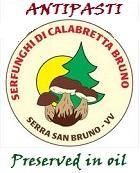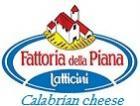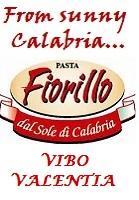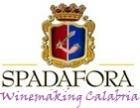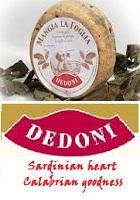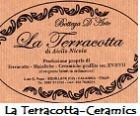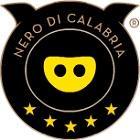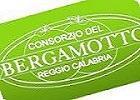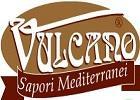
|
||||||||||||||||||||||||||||||||||||||||||||||||
|
||||||||||||||||||||||||||||||||||||||||||||||||
|
|
Events in Calabria
Beside being a religious event it is also cultural event for local music and dance. Even unbelievers who come to Polsi feel as if they have set out beyond a “new frontier”...it is a duel between the sacred and profane, it is a beautiful madness. Worshipers come from June to November, but the numbers increase between the end of August and 2 September to over 50.000.
The whole event is accompanied by wild performances of the tarantella, a local dance, which represent an ancient and universal way of honoring the divine being.
The festival had nothing of the sadness of others where the sick and deformed met in search of pity and help. It was more a great religious bacchanal, a Dionysian feast, to which people flocked as to a giant picnic in the mountains, ate, perhaps prayed a little and especially where one danced, according to Francesco Perri in his book ‘Enough of Dreams’ from 1929. “Caravans came down from every point in the valley. The people sang and uttered short, loud cries of ‘Viva Maria’ and continually fired their guns. Among the crowds around the sanctuary and in the nearby wood the shooting was incessant …. And over all that multiple discordant din that boomed like the surf of the sea rose a mingled music of pipes, harmonicas, violins, guitars and Basque tambourines.” Inside the sanctuary the song of the elderly women in veneration to Our Lady breaks the repeated sound of the non stopping tarantella; people sleep on the ground piled up in the corners, someone eat, someone despairs or cheers up, someone kneels and proceeds towards Our Lady crossing themselves and kissing the Virgin. Outside 'a rota' (dancing circle) keep on turning and the megaphone of the sanctuary tries to challenge that sound in the total unconcern of musicians and dancers who never stop.
The contemporary festival is slowly changing, the long walk has almost disappeared and nobody dances on the way. People now drive to the sanctuary, mainly by truck – and the journey is accompanied by the sound of religious chants played by portable amplifiers. Credits: Texts adapted from Wikipedia, and il cammino della musica Easter in Calabria At Polistena, the Good Friday procession culminate in a candlelight parade accompanying the dead Christ ; the renowned Giudaica at Laino Borgo (Cosenza province) has a cast of 150. The scenery for that latter was made specially by a local man, one Domenico Longo, in 1557, who , wanting to create a true replica, went specially to Jerusalem.
On Easter Sunday, when cheerfulness is restored, the 'aggute or sgute' are brought out and everyone goes to the 'affruntata', ( the meeting) held in a large number of towns, eg. Polistena, Cittanova and Gioiosa Jonica (Reggio province) and Vibo Valentia and Tiriolo (Catanzaro province), when the Risen Christ meets the Virgin Mary. The meeting between the Virgin Mary and the Risen Christ, was propitiated by St. John. The crucial moment is the so-called "sbilazioni" (unveiling), in which the Virgin still veiled in mourning recognizes that her son is resurrected. Each village has its own variations on this theme: in some places, St.John runs to tell the good news to the Virgin three times.
Christmas Firm part of the Calabrian tradition is, of course, the Crib and midnight mass; one or two artistic Cribs still exist, for example at Caulonia, where it is mechanical and can be visited all year around. The shepherds are dressed in traditional clothes and the scenery that of the Ionian coast. Naturally, Christmas in Calabria is a family affair, celebrated with the emigrants who come home for the holiday.The father is still head of the family, with recognized authority over its members. It is he who breaks the bread, carefully laying it tidily on the table; this, in effect, is a year around ritual, connected with the Last Supper.
|

|
||||||||||||||||||||||||||||||||||||||||||||||
|
||||||||||||||||||||||||||||||||||||||||||||||||
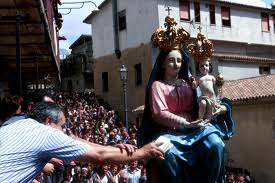
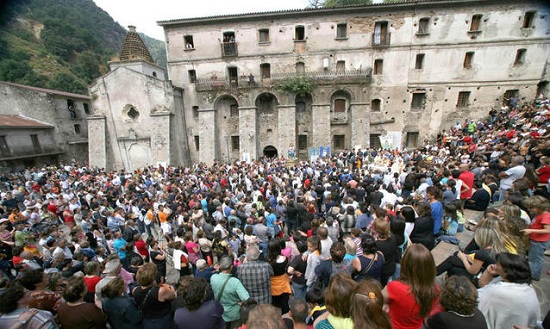
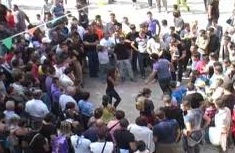 Therefore pilgrims go to Polsi to pray, thank, ask for graces to be granted, but also to feel free, live the illusion, be together, dance and sing.
Therefore pilgrims go to Polsi to pray, thank, ask for graces to be granted, but also to feel free, live the illusion, be together, dance and sing. 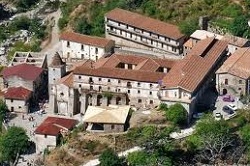
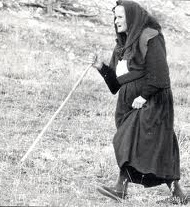
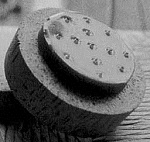 Other interesting sacred plays are those held in Plati' (Reggio province), and Nocera Tirinese (Catanzaro province ) where the amazing sight of flagellants known as 'vattienti' can still be seen on Good Friday, as they lash themselves till blood flows. The same tradition also exists at Terranova dei Sibari (Cosenza province).
Other interesting sacred plays are those held in Plati' (Reggio province), and Nocera Tirinese (Catanzaro province ) where the amazing sight of flagellants known as 'vattienti' can still be seen on Good Friday, as they lash themselves till blood flows. The same tradition also exists at Terranova dei Sibari (Cosenza province).


